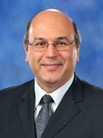| Prof. Dimitris Lagoudas Associate Vice Chancellor for Engineering |
 |
Biography: Dimitris C. Lagoudas currently is the Senior Associate Vice Chancellor for Engineering Research, Senior Associate Dean for Research, Deputy Director of Texas A&M Engineering Experiment Station (TEES), the inaugural recipient of the John and Bea Slattery Chair in Aerospace Engineering and a Distinguished University Professor at Texas A&M University. He has served as interim and permanent Department Head of the Aerospace Engineering Department at Texas A&M University and also the inaugural Chair of the Materials Science and Engineering graduate program at Texas A&M University. He has also served as an Associate Vice President for Research at Texas A&M University and Center Director of two TEES research centers.
D.C. Lagoudas’ research involves the design, characterization and modeling of multifunctional materials at multiple scales, with averaging micromechanics methods developed to bridge the various length scales and functionalities, including mechanical, thermal and electromagnetic. He has co-authored more than 550 scientific publications in archival journals and conference proceedings and one of the widely used books on shape memory alloys. The theoretical constitutive models that his research group developed have been implemented and integrated into finite element analysis software, which have been used by academic institutions around the world and also by industry and government. D.C. Lagoudas received the 2006 ASME Adaptive Structures and Material Systems Prize in recognition of his contributions to the modeling and characterization of shape memory alloys and their use in aerospace structures and he is the 2011 recipient of the SPIE Smart Structure and Materials Lifetime Achievement Award. He is a Fellow of AIAA, ASME, IOP and SES and was named a University Distinguished Professor at Texas A&M University in 2013.
Topic: Morphing Aerospace Structures with Shape Memory Alloy Actuators
Abstract: Shape Memory Alloys (SMAs) have been used in morphing aerospace structures as solid-state high-density actuation energy materials for adaptive shape control. SMAs have already demonstrated their capability of structural morphing for subsonic vehicles under various flight conditions. The return of commercial supersonic flight requires innovative solutions to be developed that meet noise and efficiency requirements for overland flight. To study such a possibility NASA is supporting a multi-disciplinary team of academic and industrial experts to explore the potential of structurally morphing the outer mold line of a supersonic vehicle. The team is considering recent advances in supersonic computational fluid dynamics, sonic boom propagation prediction tools and new design approaches of embedding SMA actuators for in situ morphing, leading to optimal low boom signatures in different atmospheric environments and flight conditions. The presentation will focus on the development of the appropriate high temperature NiTiHf SMAs based on the requirement of reliable repeated actuation up to 100K thermal actuation cycles, under high levels of stress. The thermomechanical constitutive modeling of such alloys, their modeling of low cycle actuation fatigue and failure will be discussed. A unified constitutive modeling approach will be described to capture the phenomena associated with the unique response of SMAs that include, pseudo-elasticity, shape memory effect, tension-compression asymmetry and transformation induced plasticity, evolving with actuation cycles and ultimately leading to damage accumulation and actuation fatigue failure. The design and integration of adaptive panels driven by torque tube SMA actuators into a concept supersonic vehicle and their performance under realistic flight conditions will be discussed.